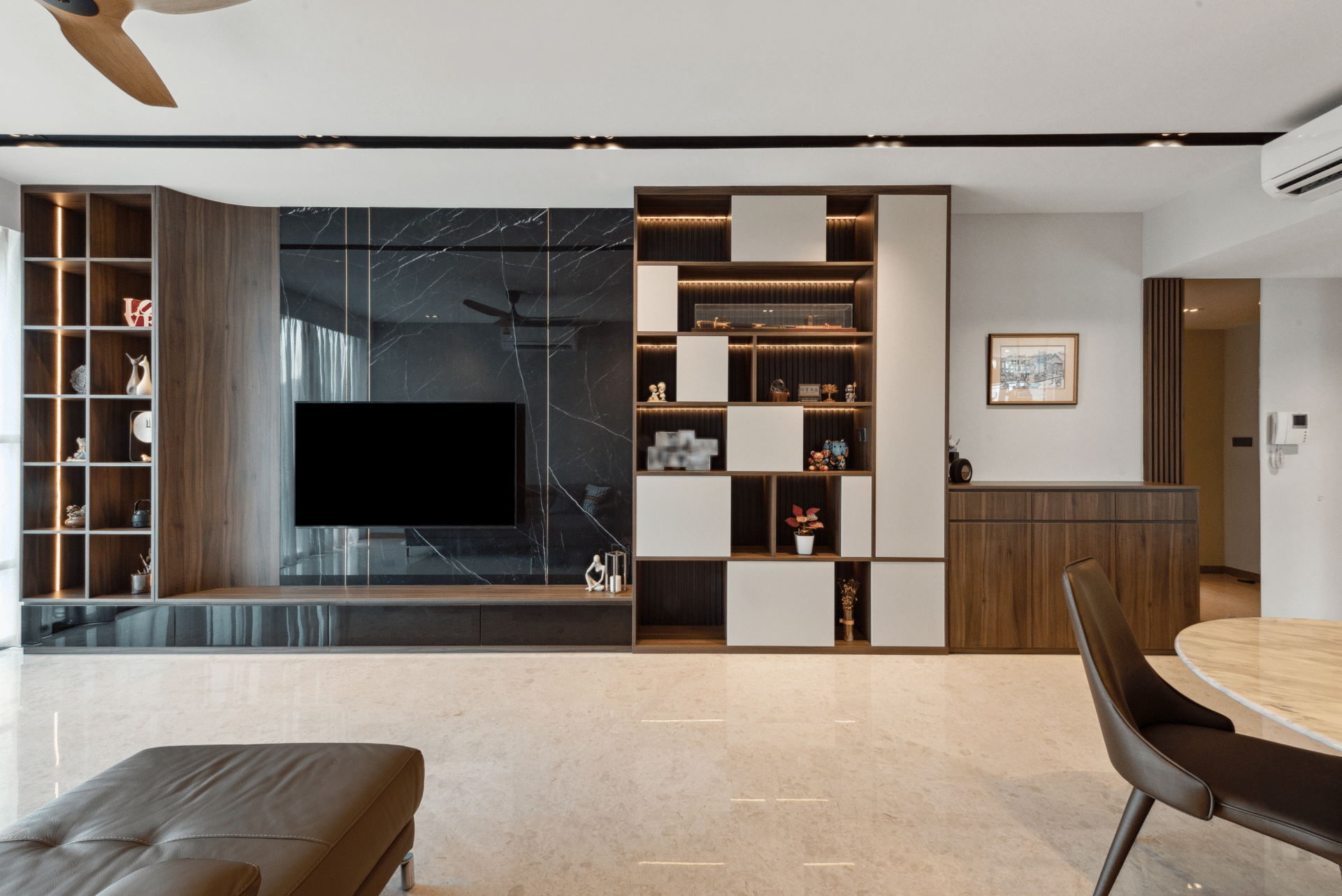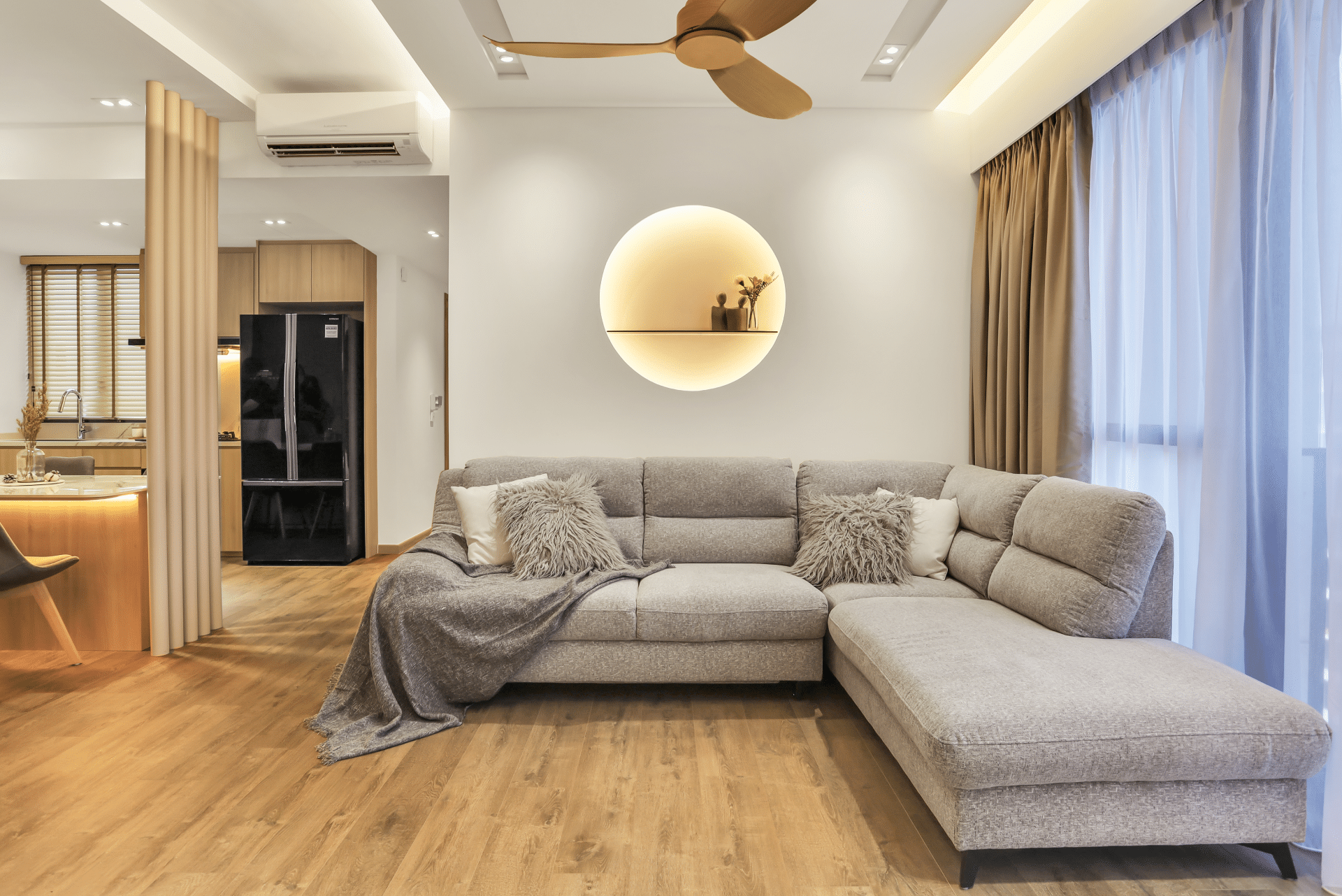Top Storage Solutions For Singapore Micro-Apartments
Singapore is considered one of the most densely populated countries in the world. With limited land space and a growing population, housing is at a premium in the city-state. Micro-apartments, typically less than 350 square feet, have emerged as an innovative solution to offer affordable housing options in land-scarce Singapore. Although micro-living can be challenging, creative design and smart use of space can transform these small homes into comfortable, functional living spaces. Here are 10 solutions to make the most of micro-apartment storage:
Difficulties In Micro Apartment Management
Living in a micro-apartment presents unique challenges not found in larger homes. These compact living spaces require creative solutions to use the limited space efficiently. From storage to multipurpose furnishings, micro-apartment dwellers must get innovative to make the most of their small footprint. Here are some key reasons why micro apartment storage management is difficult.
-
Lack of Storage
One major challenge is the need for more storage space. With no basement, attic, or spare rooms, micro-apartments have very limited built-in storage. Closet space is minimal. There needs to be more room for collections or extra belongings. Clutter accumulates quickly. Solutions like under-bed drawers, wall-mounted shelves, and multipurpose ottomans help, but storage still needs to be improved.
-
Furniture Limitations
Choosing furniture for a micro-apartment requires careful planning. Standard couches, beds, and tables will not fit. Furniture must be compact, multifunctional, or convertible. Murphy beds, nesting tables, and storage ottomans allow furniture to serve double duty. However, options are limited, and custom pieces can be expensive.
-
Cooking And Dining Constraints
Micro-kitchens mean apartment dwellers must get creative with cooking and dining. Full-sized appliances do not fit. Counter and cabinet space is minimal. Entertaining guests or preparing large meals is nearly impossible. Home chefs must learn to cook with compact appliances, limited tools, and very little prep space.
-
Bathroom Challenges
With only a shower stall and sink, micro-bathrooms require some adjustments. Lack of counter and storage space necessitates creative solutions for toiletries and supplies. Tiny showers make bathing a challenge for taller residents. Careful planning is required to organize a functional, comfortable micro-bathroom.
-
Multipurpose Room Requirements
Using a single room for multiple functions is a hallmark of micro-apartment living. But constantly reconfiguring furnishings and items for different uses can take time and effort. Murphy beds must be stowed, table tops added, and work supplies put away to convert living room to bedroom to office as needed. It demands flexibility and diligence.
-
Noise Issues
With thin walls and shared common spaces, noise can be an issue in micro-apartments. Whether from neighbors, shared hallways, or the street, unwanted sounds are difficult to escape in a small space. Solutions like soundproofing require expertise that may be limited. Earplugs become a nightstand staple.
-
Lack of Guest Accommodations
Having overnight guests in a micro-apartment can be problematic. There is simply no room for extra people to sleep comfortably. A couch or inflatable mattress may suffice for a night or two. However, micro-apartments need to be designed with accommodating guests in mind.
Challenges With Pets
Pet owners know their furry friends need ample space. However, most micro-apartments do not allow sufficient room for pets to roam and play. While cats may adapt to small spaces, dogs and other animals need more square footage and outdoor access. Micro-apartment living is generally not suited for pets.
-
Difficulty Customizing
One of the joys of home ownership is putting your stamp on a space. However, micro-apartments make customization difficult. There is little room for large décor or bold design choices. Painting walls and hanging art is possible, but opportunities to make a micro-apartment feel unique are limited.
-
Optimize Storage
Living in a micro-apartment means you only have a little space for possessions. To start, get rid of anything you don’t need or use. Be ruthless in decluttering. For what remains, make use of every storage nook and cranny. Install shelving units, wall-mounted cabinets, under-bed drawers, and other specialized storage solutions.
Strategic organization is key. Use storage containers, baskets, and organizers to store belongings out of sight neatly. Group items together, designate spaces for clothing, toiletries, kitchen supplies, and everything else you need to store. With good organization, it is possible to live comfortably in a micro-apartment without feeling cluttered or cramped. Overall, optimized storage is one of the best micro apartment storage ideas.
-
Choose Furniture Wisely
Furniture takes up precious real estate in a micro-apartment. When selecting pieces, consider size, functionality, and versatility. Prioritize furniture that is slim, compact, or easily movable. Sofas with exposed legs take up less visual space than bulky box sofas. Nesting tables provide surface area but can be slid under each other when not in use.
Wheeled furniture like ottomans with casters can be shifted around effortlessly. Opt for slender armless chairs that tuck neatly under tables. A single versatile chair takes the place of a full dining set. Convertible coffee tables with lift-tops reveal hidden storage space when needed. The key is flexibility – choose pieces that morph and adjust to your changing needs.
-
Maximize Vertical Space
Humans naturally focus at eye level. In a micro-apartment, valuable square footage goes unused above and below. Maximize vertical storage and furnishings to open up floor space. Install floating wall-mounted shelves and cabinets. Use over-door hooks or hanging organizers.
Place narrow bookcases vertically to store more items with a smaller footprint. Use vertical space behind furniture for additional storage. Bunk beds and lofted beds elevate sleeping areas over desks, dressers, or other furniture below. High-top tables with barstools take up less room than traditional dining sets. Vertical solutions make the most of every inch.
-
Choose Multipurpose Furnishings
Every piece of furniture should fulfill multiple roles in a micro-dwelling. Coffee tables with hidden storage offer surfaces plus organization. Ottomans provide extra seating and stash blankets inside. Consider a convertible dining table that folds down when not in use. Use the kitchen island for food prep, dining, and more work area.
Install a drop-leaf wall table to maximize dining and workspace as needed. Murphy beds fold vertically into the wall, transforming sleeping space into a living area when stowed. A sleeper sofa does double duty as a couch and bed for guests. Pieces with multiple functions are essential for micro-apartment living.
-
Design Flexible Floor Plans
With moveable modular furniture and partitions, you can transform your micro-apartment layout to suit different needs. During the day, roll away your Murphy bed and pull out a slim folding dining table. At night, stow the table and unroll a convertible sofa for guests. Use freestanding partition screens as movable room dividers. During the workday, a screen can section off a workspace.
At dinnertime, shift it to delineate the dining area. Adjustable room dividers create multifunctional zones. Wheeled furniture glides easily across smooth floors. Reconfigure at will – position the sofa by the window one day and move it to the opposite wall the next. Flexible floor plans allow you to modify spaces for working, exercising, entertaining, and more.
-
Incorporate Multifunctional Textiles
Rugs, curtains, and other textiles serve practical and aesthetic purposes. In micro-apartments, they must also provide versatility. A large area rug can instantly define a living room. Roll it up to turn the space into a home office or makeshift dining room. Hang room dividers of tapestry, muslin, or linen to establish different zones.
Adjust portable screens to modify spaces as needed. Use textiles to add warmth, texture, and color. Rugs and throws double as extra seating. Curtains can partition areas and muffle noise. Get creative with fabric furnishings – they enable flexibility within a fixed floor plan.
-
Take Advantage Of Hidden Nooks
Wall space micro apartments hook wires storage is the talk of two these days. Tucked-away niches are micro-living gold. Highlight and utilize awkward nooks and corners that typically go unused. Build floor-to-ceiling shelving in narrow recessed areas to maximize storage. Under-window benches and banquettes create seating and stash spots.
Install a desk or makeup vanity in an overlooked corner. Use a narrow galley hallway for coat hooks and shoe storage. Repurpose the space under staircases with drawers, cabinets, and other inventive built-ins. Micro-apartments require creativity and vision to uncover and utilize every hidden nook.
-
Maintain Clutter-Free Surfaces
Flat surfaces like tables and desks become dumping grounds in small spaces. Maintain strict discipline about not leaving things out. Store items immediately after using them. At the end of each day, do a quick tidy. Put away dishes, wipe down counters, and straighten pillows – establishing this as a habit prevents mess build-up.
Decluttering surfaces daily keeps micro-apartments feeling orderly rather than chaotic. Designate specific zones for personal items. Contains keys, a wallet, and a phone in one tray. Corral office supplies in caddies. Apply this compartmentalizing strategy throughout your micro-apartment. Treat all surfaces as display space, not storage.
-
Create Custom Built-Ins
Take advantage of uniquely shaped alcoves with customized built-ins. Measure and design bookcases, desks, cabinets, and shelving to fit into irregular niches. This wasted space instantly becomes useful storage and work areas. Built-in window seats maximize narrow ledges. Fashion a built-in headboard and storage with leftover space between bed and wall.
Building customized features is cheaper than purchasing specialty furniture. Maximize kitchen and bathroom spaces with custom cabinets, vanities, and shelving. Every inch can be utilized with one-of-a-kind built-ins. Work with carpenters to create purposeful features for your micro-apartment’s quirks.
-
Embrace Minimalism
Micro-apartments require a minimalist mindset. Limit possessions to essential items only. Adopt a “one in, one out” policy – something new comes in only when something else goes out. If you last used it over a year ago, lose it. Avoid holding on to items for some future scenarios. Furnish for your actual day-to-day needs.
Display only your most beloved decor – keep surfaces and walls relatively bare. Practice regular maintenance, like cleaning, organizing, and decluttering. Living simply with fewer, carefully chosen items helps micro-apartments feel well-designed rather than cramped. Keep this micro apartment storage idea in your mind.
-
Hire A Company
Living in a micro-apartment poses unique storage challenges. With limited space, creative solutions are needed to maximize every inch. Hiring a professional storage design firm brings expertise crucial for building customized systems in small spaces. Their innovative designs make the most of the compact footprint. It is important to hire a company like IDID for top micro apartment storage solutions.
Final Thought
Micro-apartments may require a little bit of adjustment, but they definitely have immense advantages when it comes to urban dwellers. Creatively designed storage units, furniture plans, and built-ins can make small spaces comfortable by making them homely and cozy. It is all about smart use of each space, keeping everything clean, and maintaining only vital things. Micro-apartments can become cute, useful homes by just being simple and multi-functional.
It is important to note that living in a micro-apartment has its own challenges, different from those existing in a large home. To overcome these small living spaces, creativity is required and thus more economical. Micro-apartment dwellers have to resort to innovation from storage to multi-purpose furnishings to utilize their limited space. Why managing micro-apartments can be challenging: you might find this post on micro-apartment storage ideas useful.


